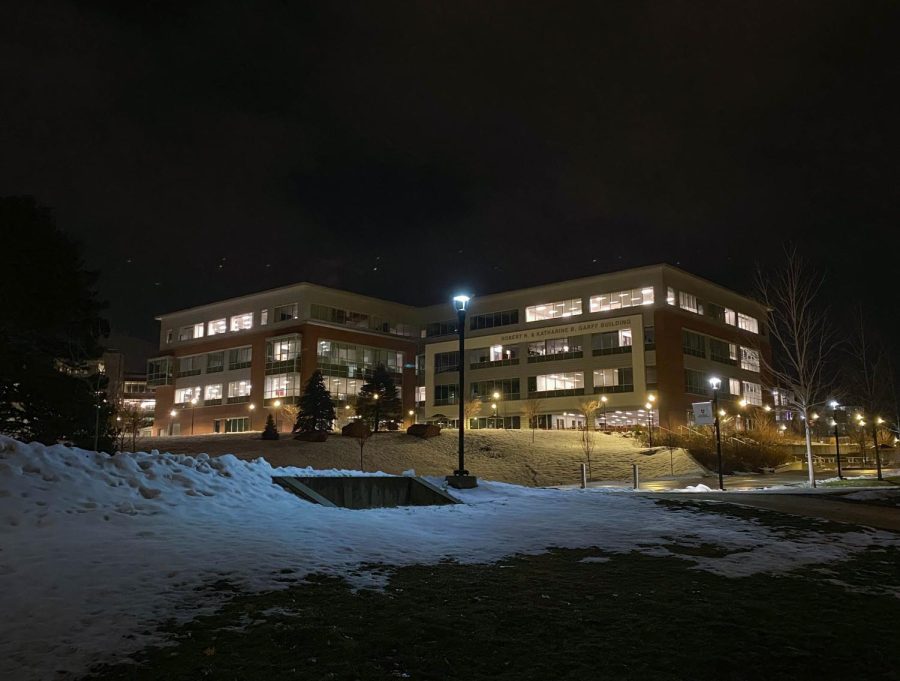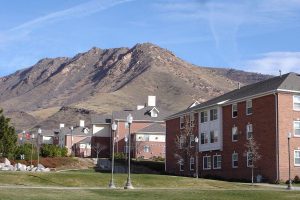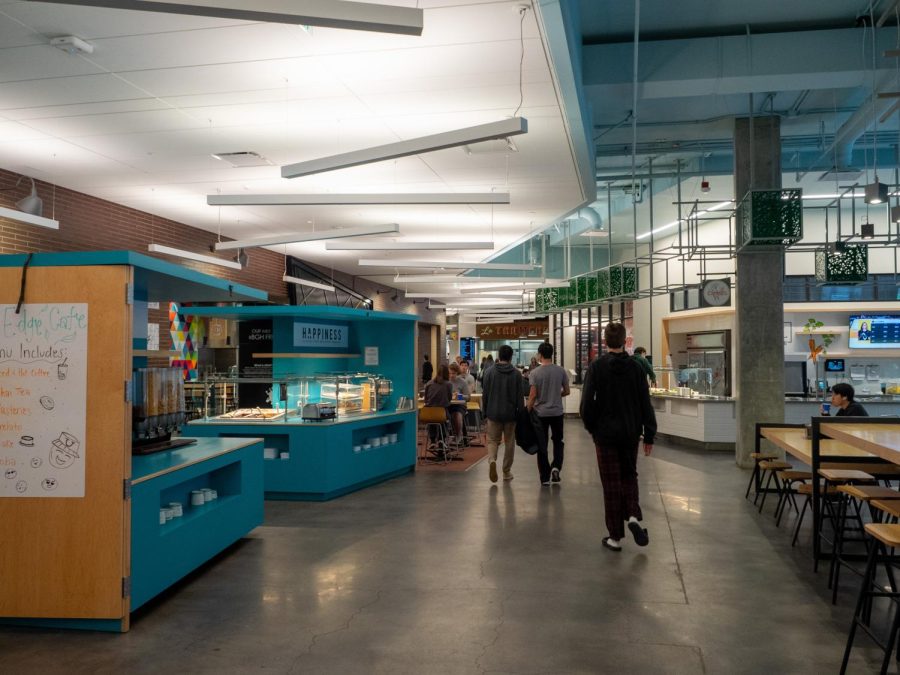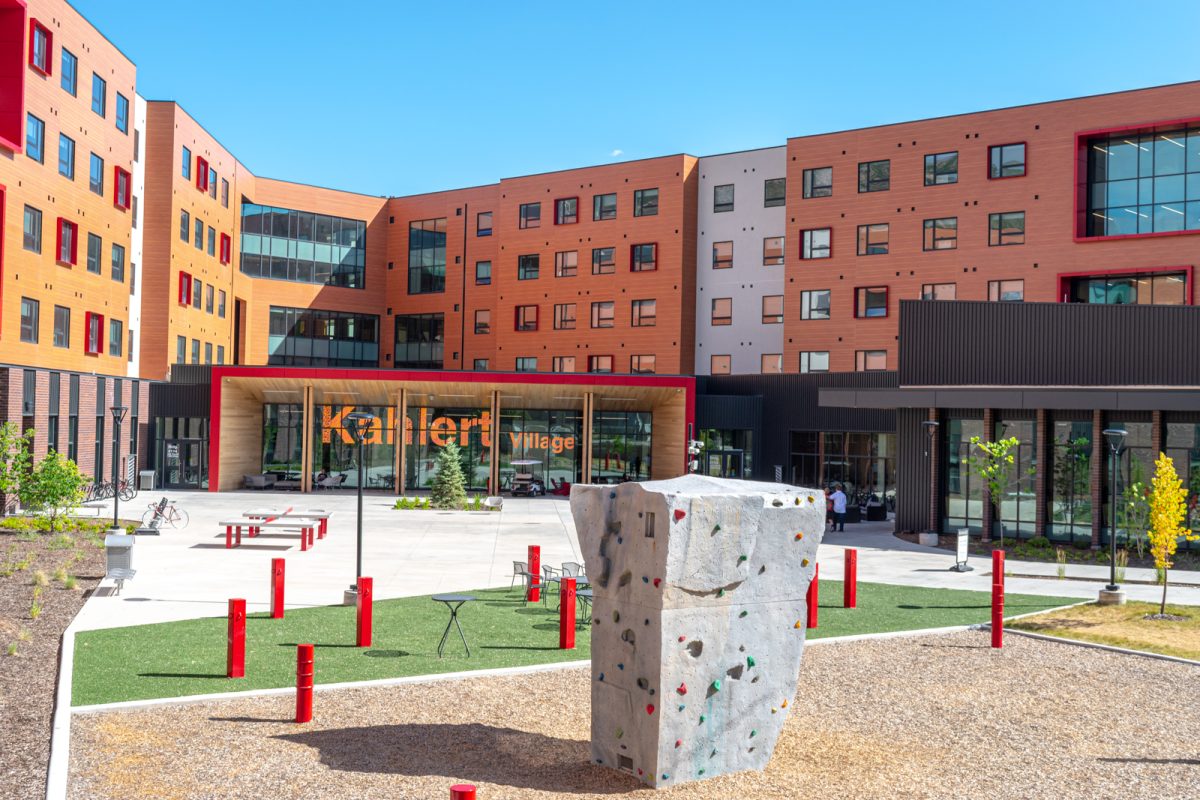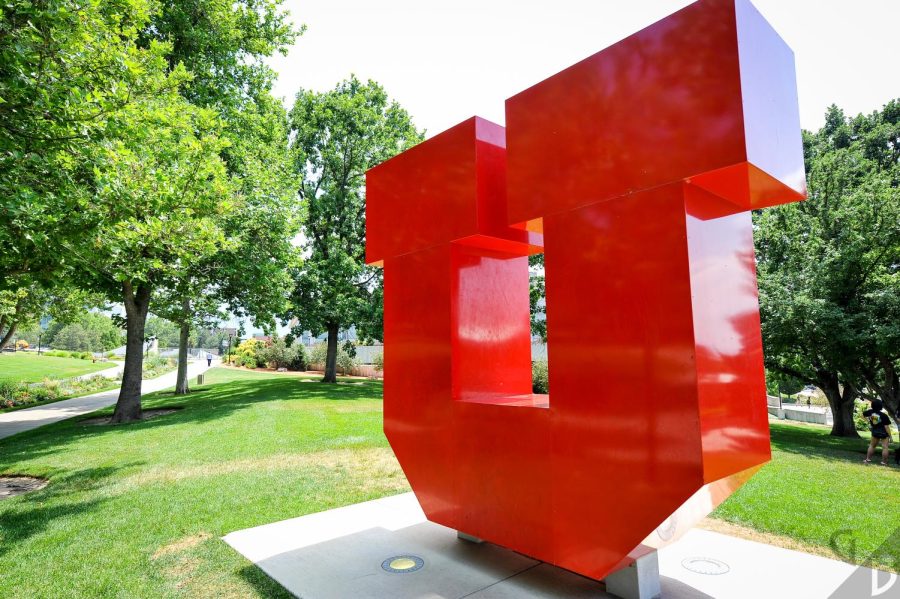How the U is Working to Reduce Waste and Energy Consumption on Campus
Robert H. and Katharine B. Garff Building at the University of Utah with the lights on past school hours on Monday, Jan. 16 2023. (Photo by Andrea Oltra | The Daily Utah Chronicle)
January 20, 2023
According to Sustainability and Energy Facilities a majority of University of Utah’s carbon footprint, 60%, comes from the energy buildings use, such as natural gas heating and electricity.
With over 300 buildings on campus being heated and cooled year-round, resources such as natural gas are being used consistently. According to Lissa Larson, the U’s associate director in sustainability, the energy consumption is raised in the colder months, despite the break between semesters.
“In total, energy usage in general goes up in the winter because heating is such a substantial use, so even though people have gone home we will let buildings get down to lower temperatures, but we don’t let them get down to freezing,” she said.
The U has several programs and projects it has implemented to reduce energy consumption in the winter months. Larson described the project to update the HVAC zones on campus.
“Spaces have a zone of comfortable temperatures that they can operate between, and they will reset to go back to a cooler or hotter temperature so that way it’s not using unnecessary heat all the time if it’s not occupied,” she said.
Another program the Sustainability Office on campus is offering is Heat People, Not Spaces. The program allows U faculty, staff or interns to trade in a space heater for an electric blanket and also offers electric blankets for purchase.
According to Larson, electric blankets can save up to 90% on energy compared to space heaters.
“You can email sustainability@utah.edu, our office is paying for the cost of the new program,” she said. “For space heaters, the cord will be cut, and they will go to surplus and salvage so they can’t be reused and put back into the ecosystem. If you don’t have a space heater to turn in but want to get an electric blanket at a reduced rate that’s available as well.”
All of this is to try and reach the goal of carbon neutrality at the U by 2040. Larson said there are people on campus working to achieve this goal who are happy to give students and staff a look at what they are doing to be more sustainable.
She also urged students and staff to reduce their own personal energy waste while on campus or at home.
“Unplug stuff,” Larson said. “Zombie usage is a thing when you have stuff plugged into the wall [and] it is still drawing some [electricity].”
Larson mentioned adjusting your thermostat can help reduce energy waste as well.
“Changing your thermostat is a huge difference, making sure you are knocking it down a few degrees, especially when you aren’t in the room,” she said.
Although it plays a big role, energy waste isn’t the only waste on campus. Sophia Paradis, a student in her final year of studying communication and environmental studies at the U, reflected on other types of waste she sees on campus.
“It really bothers me how much plastic and single use items I see on campus,” she said. “There’s fliers everywhere, there are pens being given out that students will use twice then throw away, things like that, that once you actually start to consider the impact, it just snowballs into a much bigger problem.”
Paradis gave advice to other U students, mentioning ways she cuts down on her waste every day.
“I’ve been trying to get a lot better at bringing my own mug to campus, making coffee at home, or if I buy it, having my own container to put it in,” she said.


